#vmly
Text

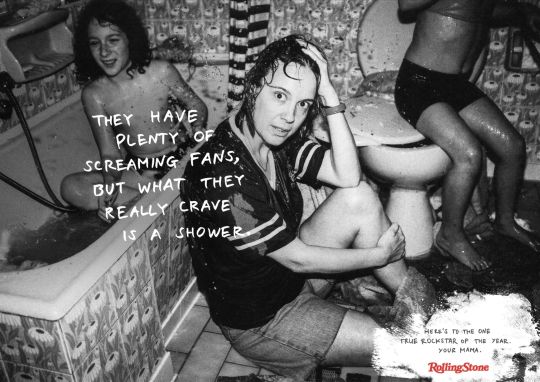
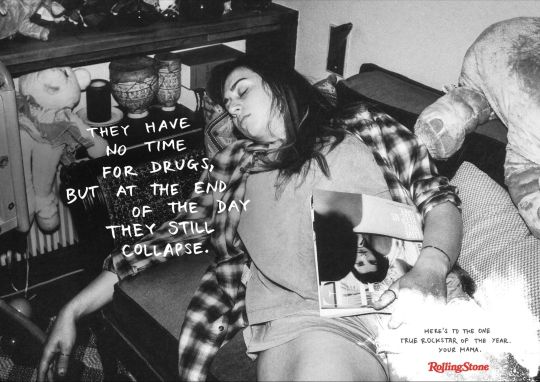

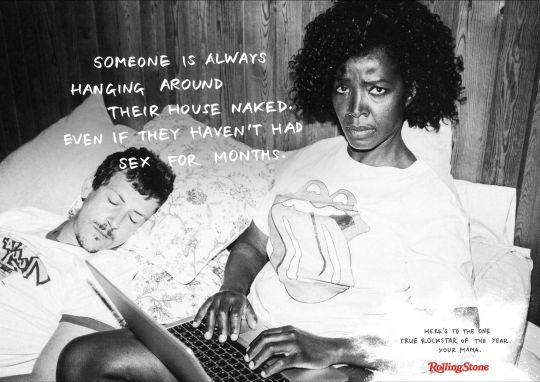
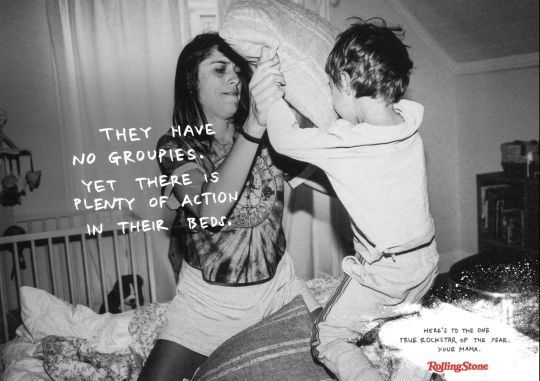
VMLY&R (Italy) for Rolling Stone
2 notes
·
View notes
Photo

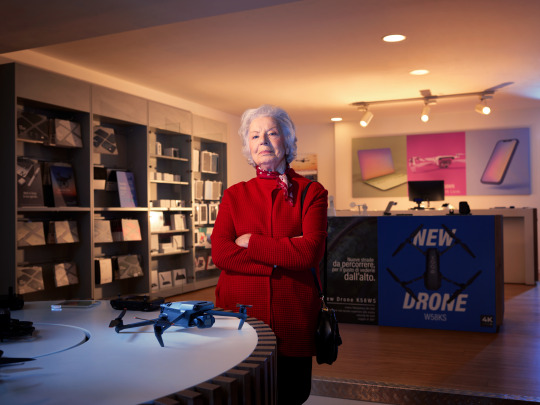
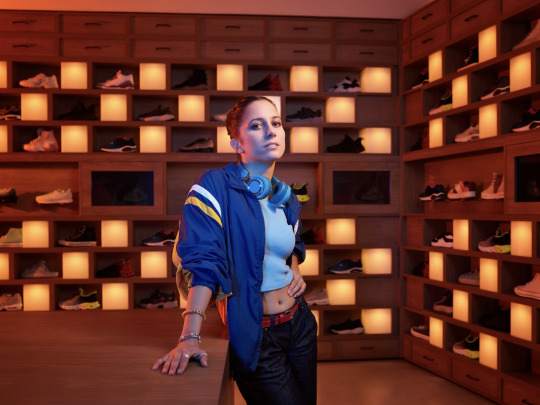
Shot by Alex Telfer, this outdoor campaign for financial giant Bancomat focussed on every generation. Commissioned by Vmly&r Milan.
View more of Alex’s work here:
http://www.i2iphoto.com/photographers/alex-telfer
1 note
·
View note
Link
I will always be me.
Acaba de lanzarse "Siempre seré yo", el primer libro electrónico para personas con enfermedad neuronal motora (ENM) que reproduce sus voces cuando leen en voz alta. Se trata de una enfermedad neurodegenerativa que deteriora las células nerviosas musculares y, con el tiempo, acaba con la capacidad de hablar.
0 notes
Text
A world view of creativity at MAD STARS: Meta’s Fabio Seidl, & Google’s Artwell Nwaila
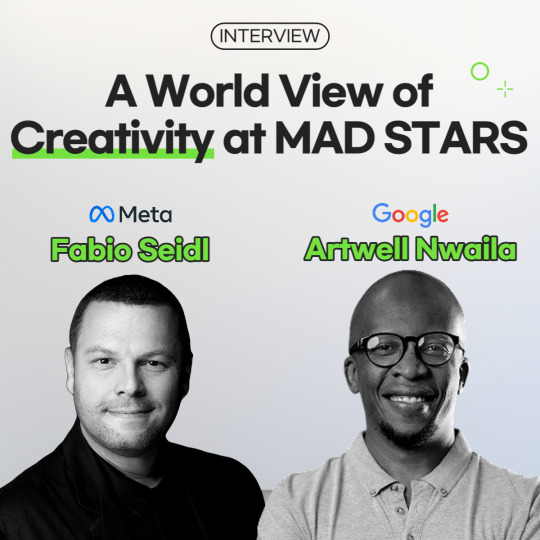
Fabio Seidl is director of global creative development at Meta. He has been based in the US for a decade but grew up and spent his early career in Brazil. Before joining mMeta four and a half years ago, Fabio had worked in major international agencies throughout his career – DDB Worldwide, VMLY&R, 360i and Leo Burnett in the US; Ogilvy, McCann and Africa in Brazil.
Artwell Nwaila is head of creative & ecosystem at Google Sub-Saharan Africa. Before joining Google, he worked as creative director at sport broadcast channel SuperSport in South Africa and was the founder and creative director of creative network, SA Creatives. He also worked in boutique agencies such as Offlimit Communications and Straight Twisted.

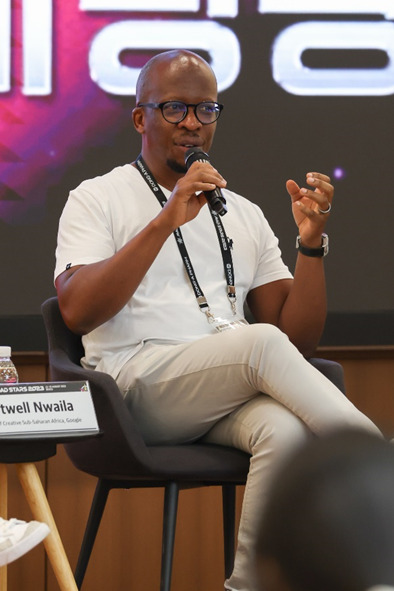
These two creatives from different backgrounds came together at MAD STARS as members of the executive jury that chose the Grand Prix winners. They share their views on Grand Prix-winning creativity, making great creative work and Asian creativity in a whole world perspective.

[Fabio Seidl]
“We discussed the Grand Prix of the Year for many hours,” Fabio recalls. “And we talked a lot about the message we wanted to leave to the industry. If it was ‘be experimental’ or ‘own your brand’s space’ or ‘show me something I’ve never seen or that I don’t know?’ The latter ended up being stronger. We wanted to make sure that the results showed that creativity, when it is unexpected, is even more powerful.”

[Artwell Nwaila]
“A big focus for me whenever I judge is whether the campaign answers a real brand need or it aims to be creative for the sake of being creative,” Artwell adds. “The magic in the Grand Prix winners is that they are incredibly clever and creative ideas that actually answer a brand need.”
Artwell also believes that to nurture the kind of creative thinking that wins awards and rewards its clients during campaigns, individuals in creative fields should venture beyond their specialised domains. “By this, I mean that creativity thrives when it is fuelled by a diverse range of experiences. This can only be accomplished by creatives actively acquiring new skills. The greater the variety of skills they acquire, the more expansive their worldview becomes, enriching their creative perspectives,” he says.

[Fabio Seidl]
“Collect experiences that are not obvious,” Fabio adds. “Travel, read, meet people, learn what other people don’t know. If you are a new creative but you’re learning from pragmatic formulas, you’re missing your most important asset - a new perspective.”
For any young creatives who think that advertising is an easy career, there is one word – sorry. It’s a tough industry and even tougher when times are hard socially and/or economically. The keys to success right now are also muddied by the rate of change in the world and therefore the industry that reflects it and feeds from it.
For Fabio, one key is mandatory, “Collaboration. And by that I don’t mean ‘everyone is a creative’ which can be inefficient. I mean, ‘bring to the table something only you could think or do’. The industry is tough now because there’s much more to learn every day. Much more information. The audience is fragmented and create their own stories and content. So, we need to partner with talent that can come up with what we would never think: creators, makers, technologists, artists, producers.”
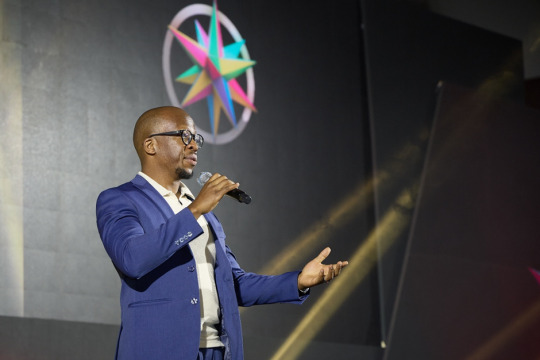
[Artwell Nwaila]
Artwell adds a different kind of collaboration. “I believe that the industry should embrace collaboration with technology rather than viewing it as a competitor. Those who can discover ways to partner with technology are more likely to attain success. Secondly, while technology exerts significant influence across various aspects of our industry, it's crucial to remember that creativity remains paramount. It is we the creatives, not machines, who possess the ability to deliver on that front.”

[Artwell Nwaila]
Artwell also gave a talk called Leveraging Data to Amplify Creativity in Advertising in which he described the power of data for success in a tough industry. “The main highlights focussed on the importance of moving away from assumption based creative development and move towards data driven creativity,” he says. “Consumers are bombarded by more than 5000 marketing messages a day and therefore it’s important to use strategies that make campaigns stand out and deliver return on investment. A point I wanted to land in the talk is that creatives don’t need to be data scientists. Accessing data can be as simple as using Google trends.
“Creatives need to be more curators than ever,” he adds.
Both creatives were impressed by the Asian work they saw at MAD STARS, especially work that was embedded in its local culture.

[Fabio Seidl]
“MAD STARS’ highlight for me was to see the regional insights working to bring great ideas to life. It was wonderful to see the harmony between simplicity, ingenuity and craft that only Asia can build,” Fabio notes.
[Artwell Nwaila]
Artwell was also struck by the powerful way in which local insights were used. “Based on my observations at MAD STARS, it's evident that the Asian creative community is not just aligned with the global community but, in some instances, leading the way. What particularly impressed me was the emphasis on authentic localization, where creatives craft content tailored to specific regions and address their unique needs. This approach signifies the future of marketing, marking a departure from the era of one-size-fits-all campaigns.”
#festival#advertising#busan#marketing#creative#digital#madstars2023#madstars#awards#award#jury#judging#creative solutions#google#meta
3 notes
·
View notes
Text

Open for entries: The Big C global brief to end the stigma of cancer in the workplace is now open for entries
In Cannes, top creative leaders from across Edelman, IPG, Omnicom, Publicis and WPP joined forces on stage to deliver one of the most high profile briefs the industry has seen, impacting the lives of up to 4 billion people. The ask? To create a culture-defying programme, experience, campaign that could erase the stigma and insecurity of cancer at work.
Today, Monday 10th July, The Big C brief officially opens for entries.
The brief invites the entire industry and beyond, as individuals or duos within one agency or cross-agencies, to create a campaign that will launch on World Cancer Day 2024, in a global multi-media campaign supported by $100m.
Powered by Cannes Lions’ world class judging systems, judging will be led by senior creative and strategy leads across the five holding companies including: Susan Credle (global chair & global chief creative officer, FCB), Chaka Sobhani (global CCO of Leo Burnett), Luiz Sanches (CCO of BBDO NA), Judy John (global CCO of Edelman) and Debbi Vandeven (global CCO of VMLY&R) .
The submission deadline is Friday, September 15. Judging will take place throughout October, with the winner announced at the end of that month. The winners will also receive a delegate pass to attend Cannes Lions 2024 from the Festival.
For more details please visit www.workingwithcancerpledge.com and link through to the entry platform.
About Working with Cancer
Working with Cancer aims to completely erase the stigma and insecurity of cancer at work. Today, the program initially launched by Publicis Groupe is an alliance of major international companies, with over 600 pledging businesses impacting up to 20 million employees, united by the aim to create an open, supportive and recovery-forward culture for cancer sufferers. The program was recently recognised by Cannes lions with a Grand Prix for Good in Health.
2 notes
·
View notes
Text
youtube
Cannes is the ultimate advertising ICYMI
I try to keep up with what's causing the industry to buzz, but every year projects surface at Cannes that I missed. Here are some of my favorites that I didn't know about until they popped up at the 2023 Cannes Creativity Festival.
Chipotle Doppelgänger
While there are a gazillion of combinations of Chipotle's various ingredient options, agency GALE figured out how to tell when two people somewhere in the country placed the exact same mobile order at around the same time and messaged each where their "Chipotle Doppelgänger" was. Search it on Google and you'll see how much organic attention these received. Case study above. Agency: GALE. Lion: Gold, Data-Driven Targeting
Muskrat Magazine "Missing Matoaka"
The cynic in me couldn't help seeing many purposed-driven Cannes entries and winners as desperate attempts at trophies rather than sincere concern for a problem. But I admire this one for being so innovative and clever in how they attempt to counter the inaccuracies in Disney's Pocahontas. (And, okay, I'll admit that it's a stretch that their "client" is a small publication.) Agency: BBDO, Toronto. Lion: Gold, Silver, and Bronze, Brand Experience & Activation; Gold, Radio & Audio
I see Coke
Pepsi arrived to Saudi Arabia before Coke, so they have more share and spend more on media. “In a region where Coke is the challenger and not the leader, there was still one place Coca-Cola owned: movies and TV shows. So, we turned 100 years of product placements on the big screen into an interactive, shoppable experience using voice [Alexa].” Easier said than done. I can’t imagine what it took to pull this off, but it’s a fun idea. They claim that brand awareness increased 234% as a result. Case study here. Agency: VMLY&R. Lion: Silver, Radio & Audio
Opt Ink
McCann’s client wanted to increase the number of Germans who consent to donate their organs. Their ingenious solution: “a free tattoo designed by renowned ink artist Gara” and offered at 250 studios across the country. They promoted it at tattoo conventions, through influencers, and got a ton of free PR. Turns out 25% of Germans already have a tattoo, so they had a built-in audience. Case study here. Agency: McCann Germany. Lions: Gold, Social & Influencer; Silver, Direct; Silver, PR; Bronze, Direct; Bronze, Media.
Clash From The Past
To celebrate Clash of the Clans' 10th anniversary, Wieden + Kennedy created a 20-minute documentary celebrating the make-believe FORTY-year history of the game. This is reminiscent of the "Make-Believe History of Black Star Beer" which was also done by Wieden and also won big in the award shows. But I think it's okay to steal from your own agency's history.
In addition to the 20-minute documentary – which has was produced really well, especially the old commercials – the game makers invited current fans of the game to play games from Clash's make-believe historic origins. Winner of the Grand Prix for Gaming AND Grand Prix for Entertainment. Case study here. Full documentary here.
Cashback for your jersey's back
Just before the 2022 FIFA World Cup, the Brazil national team made the jersey they would be competing in available for purchase by fans. The Nike jersey was the most expensive ever. Flash, "a benefits card" that gives cash back for certain purchases, announced on social that they would reimburse half the cost of the jersey if fans put "Flash" on the back of the jersey instead of a player's name. That's a very clever guerrilla tactic that answered a real problem for fans and got Flash a ton of attention. I won't say it was "free publicity," because they did have to pay out a lot to cover half the cost of the jerseys ordered before Nike's website blocked people from putting "Flash" on their jerseys. Case study here. Agency: FCB Brazil. Lion: Gold, Social & Influencer
Sorriso sponsors Sorriso
Sorriso is the name of a Colgate toothpaste and a big shot football player. “Sorriso” means “smile” in Portuguese. Sorriso (the toothpaste) were able to get their logo on the back of Sorriso's (the soccer star) jersey/kit AND wherever the player’s name appeared on stadium signs and TV screens. Then they did the same for a female player with that last name. I saw this one mentioned as a Cannes contender, but it looks like it didn't win any Lions. Case study here. Agency: VMLY&R.
McDrip
To recruit more young employees to work in their restaurants in Sweden, DDB got a streetwear designer to redesign McDonald's uniform. Even if it's still a hurdle to get teens to work at a fast food restaurant, I bet it increased the chances teens would apply to McDonald's ahead of other fast food joints. Case study here. Examples of TikTok here and here. Lion: Bronze, Social & Influencer.
Hilton Waitographer
To show the lengths they go to serve guests, Hilton in the Middle East brought in a professional photographer to train staff people – especially restaurant servers – how to take good phone photos. By TBWA/RAAD, Dubai. (It didn't win at Cannes, but it was in some coverage of Cannes hopefuls. I'm not going to include a link to the case study because it was silly and overlong.)
#advertising#ads#adverts#creative advertising#advertising education#commercials#tv commercials#Cannes#Cannes creativity Festival#Cannes Lions 2023#Youtube
2 notes
·
View notes
Text
Fussball.TV для Евро-2024 с 19,2°Е
Немецкий оператор спутниковой платформы Sky Deutschland предоставит свои мощности новым футбольным каналам Fussball.TV , которые Deutsche Telekom запускает по случаю предстоящего Евро-2024 . Один из этих каналов, Fussball.TV 1 , уже регулярно вещает на Astra 19.2°E . УЕФА/ВМЛИ&РЕвро-2024 VMLY&R УЕФА Fussball.TV 1 появился на tp. 47 спутников Astra 1KR (19,2°E) с частотой 11,170 ГГц, поляр. H (SR: 22000, FEC: 3/4; DVB-S2/8PSK). Передача осуществляется в стандартном разрешении SD в кодек... Читать дальше »
0 notes
Text
VMLY&R Commerce junto a Shell lanzaron la campaña de la Nueva Shell V-Power
VMLY&R Commerce, agencia liderada por Karina Aiello, junto a Shell lanzaron la nueva campaña para Shell V-Power.
youtube
La campaña cuenta la evolución y los beneficios de la Nueva Shell V-Power, siendo el nuevo combustible que limpia al 100% las partes críticas del motor en un solo tanque, dando más potencia y aceleración a tu auto.
Georgina Roccatagliata, Directora General de Cuentas de VLMY&R Commerce Argentina, agrega: "teníamos como desafío este brief increíble, esos lanzamientos que se dan cada 4/5 años y con un producto que tiene un beneficio tan grande para contar y seguir construyendo la cercanía con la gente. El proceso nos llevó a desarrollar el concepto de campaña "Tu auto y vos al 100", una campaña integral quecuenta con distintos mensajes en plataformas y medios como: Cine, TV, Radio, Activaciones, Activaciones Digitales, VP, Punto de Venta e influencers".
0 notes
Text
1982 Sprite, no longer a joke.
Heat happens, stay cool.
Conceptualized by Ogilvy Shanghai, in partnership with EssenceMediacom, VMLY&R Commerce, Design Bridge and Partners, and Landor & Fitch, Sprite’s latest brand act has been welcomed as a hilarious reaction to a staple in Chinese youth culture.
0 notes
Video
Seguici sul: https://notizieoggi2023.blogspot.com/2024/01/chiara-ferragni-e-lo-scandalo-balocco.html
Chiara Ferragni e lo scandalo Balocco: «Costerà caro, il mondo degli influencer cambierà per sempre»
Lo scandalo Ferragni-Balocco ( e non solo quello, visto i molti fronti che interessano la più nota delle influencer italiane) «costerà caro» nell’immediato non soltanto a Chiara Ferragni e all’azienda dolciaria piemontese. Ma avrà «un impatto anche sull’intero settore del marketing degli influencer», sostiene Simona Maggini, 51 anni, dal luglio 2020 country manager per l’Italia di Wpp, uno dei big four della comunicazione, che controlla tra l’altro i network Ogilvy, Hill+ Knowlton e VMLY&R.
Quale è la ricaduta del Ferragni-gate sugli investimenti pubblicitari da parte delle aziende?
Simona Maggini«Difficile ipotizzare subito un vero e proprio cambiamento negli investimenti già stabiliti, i budget non si muovono così rapidamente e non possono essere cambiati all’improvviso. Ma è probabile una coda lunda nelle scelte dell’anno prossimo su quanto destinare a influencer e quanto ai media tradizionali. Ci aspettiamo, però, molta più attenzione e selezione da parte delle imprese e più regole e rigore in un’area fino ad oggi molto libera e poco disciplinata, a parte le recenti modifiche introdotte dall’Agcom».
Si riferisce alla richiesta dell’Authority di dare più visibilità all’#adv nei post per segnalare che si tratta di pubblicità? «Sì. Ma ci attendiamo anche che siano le aziende, le agenzie di comunicazione e, mi auguro, gli stessi influencer a chiedere più trasparenza e disciplina. Siamo in un’area talmente disintermediata, con poche regole e con una tale velocità di produzione, pubblicazione di contenuti ed esposizione agli utenti finali, rispetto ai tempi più lunghi delle campagne tradizionali, che sono sorpresa di non aver visto scoppiare un maggior numero di casi come questo. Nei nuovi media tra generare una foto o un video e pubblicarli sui social passano pochi minuti e quella foto e quel video diventano immediatamente visibili all’utente finale».
Questa velocità rende più complicato vigilare? «La catena virale che parta da un post è incontrollata. A maggior ragione bisogna lavorare bene prima. Noi consigliamo ai nostri clienti molto rigore interno, di coinvolgere gli uffici legali aziendali o di appoggiarsi ai consulenti legali delle agenzie di comunicazione, per coprirsi le spalle da eventuali incidenti. L’influencer non è una scorciatoia pubblicitaria, ma deve essere parte di una strategia ben strutturata. Noi stessi in Wpp ci stiamo dando delle regole».
Ad esempio? «Abbiamo un legal director che con le agenzie supervisiona tutte le aree in cui gli influencer vengono ingaggiati, verifichiamo contratti, compensi, visibilità, numero di follower. Lo facciamo innanzitutto per noi stessi e spesso sconsigliamo di usare un influencer se non offre le garanzie adeguate».
Come spiega l’incidente del pandoro Balocco? «Qualcuno non è stato attento al contenuto comunicato». Quanto vale in Italia il marketing degli influencer? «Oggi circa 400 milioni, ma è aumentato in modo esponenziale negli ultimi due anni. Moda e beauty vivono tantissimo di influencer, i prodotto da supermercato meno».
Lo scandalo del pandoro Balocco pone un problema di credibilità degli influencer? «Gli influencer sono di due tipi: le celebrities, come gli attori del cinema o altri nomi molto noti a tutti; e poi i micro o nano influencer, personaggi non così famosi e riconosciuti dal grande pubblico, ma che sono molto conosciuti all’interno di una community o di una disciplina sportiva particolare».
Quindi? «Escludendo il caso recente, di solito le celebrities sono più affidabili proprio perché sono conosciute da tutti. Costano di più, ma in genere portano più risultati».
Chiara Ferragni, però, è una celebrity e per questo ha ricevuto un milione dalla Balocco per la campagna del pandoro benefico: come spiega l’incidente? « C’è stato un inciampo, poi bisogna vedere se volontario o meno, la procura sta indagando. Qualcuno non è stato attento al contenuto comunicato. Il Ferragni-gate però non è tanto un problema di credibilità o buona fede, ma di gestione di una operazione complicata: l’utilizzo di una influencer è diventato una campagna commerciale vera e propria, vendere pandori, ma anche attività benefica».
Chi ha sbagliato, Balocco o Ferragni? «Balocco e Ferragni, c’è sempre corresponsabilità. Sospetto che tutti abbiano sottovalutato l’elemento di complessità dell’operazione».
Ferragni, però, in passato aveva gestito così anche le uova di Pasqua di Dolci Preziosi. «Il tema è più generale e riguarda l’insana abitudine di collegare alla vendita di un prodotto fondi da destinare in beneficenza. E’ un problema di etica: quando si lega un prodotto a una donazione è sempre un’operazione borderline. Se non si aderisce a regole ferree e non si chiarisce in modo rigoroso quanto, come e dove va la beneficenza, si rischia di inciampare».
Quindi ben venga un nuovo ddl sulla beneficenza? «Ma certo, ben venga qualsiasi regola, se intelligente. E’ un bene che i brand facciano beneficenza, ma dovrebbero farlo nel modo più silenzioso possibile, lontano da logiche commerciali. Se poi un’impresa vuole destinare una parte del ricavato delle vendite di un prodotto a uno scopo benefico, deve fare dichiarazioni stentore, essere inattaccabile».
Il pandoro costerà caro a Ferragni? «Sì, costerà caro in termini di reputazione, perché è un personaggio molto esposto. Chi è molto esposto lo è nel bene e nel male. Anzi, il contraccolpo negativo sui personaggi famosi è sempre amplificato, perché se sei famoso, sei invidiato e tante persone vogliono farti cadere».
A Balocco quanto costerà questa storia? «La memoria delle persone è breve. Ci sarà un grande impatto negativo nel breve termine: in presenza di tanti concorrenti e alternative a livello commerciale, sconteranno il danno reputazionale. Poi nel lungo periodo il ricordo scemerà. Ma in occasione del prossimo Natale avranno qualche problema, al netto di sanzioni ed eventuali rimborsi ai consumatori. Il danno reputazionale per un’azienda non è così facile da riparare. Ferragni è una persona, può parlare e spiegarsi. Un marchio ha più difficoltà e non suscita empatia quando fa un comunicato stampa».Chiara Ferragni e lo scandalo Balocco: «Costerà caro, il mondo degli influencer cambierà per sempre»
Lo scandalo Ferragni-Balocco ( e non solo quello, visto i molti fronti che interessano la più nota delle influencer italiane) «costerà caro» nell’immediato non soltanto a Chiara Ferragni e all’azienda dolciaria piemontese. Ma avrà «un impatto anche sull’intero settore del marketing degli influencer», sostiene Simona Maggini, 51 anni, dal luglio 2020 country manager per l’Italia di Wpp, uno dei big four della comunicazione, che controlla tra l’altro i network Ogilvy, Hill+ Knowlton e VMLY&R.
Quale è la ricaduta del Ferragni-gate sugli investimenti pubblicitari da parte delle aziende?
Simona Maggini«Difficile ipotizzare subito un vero e proprio cambiamento negli investimenti già stabiliti, i budget non si muovono così rapidamente e non possono essere cambiati all’improvviso. Ma è probabile una coda lunda nelle scelte dell’anno prossimo su quanto destinare a influencer e quanto ai media tradizionali. Ci aspettiamo, però, molta più attenzione e selezione da parte delle imprese e più regole e rigore in un’area fino ad oggi molto libera e poco disciplinata, a parte le recenti modifiche introdotte dall’Agcom».
Si riferisce alla richiesta dell’Authority di dare più visibilità all’#adv nei post per segnalare che si tratta di pubblicità? «Sì. Ma ci attendiamo anche che siano le aziende, le agenzie di comunicazione e, mi auguro, gli stessi influencer a chiedere più trasparenza e disciplina. Siamo in un’area talmente disintermediata, con poche regole e con una tale velocità di produzione, pubblicazione di contenuti ed esposizione agli utenti finali, rispetto ai tempi più lunghi delle campagne tradizionali, che sono sorpresa di non aver visto scoppiare un maggior numero di casi come questo. Nei nuovi media tra generare una foto o un video e pubblicarli sui social passano pochi minuti e quella foto e quel video diventano immediatamente visibili all’utente finale».
Questa velocità rende più complicato vigilare? «La catena virale che parta da un post è incontrollata. A maggior ragione bisogna lavorare bene prima. Noi consigliamo ai nostri clienti molto rigore interno, di coinvolgere gli uffici legali aziendali o di appoggiarsi ai consulenti legali delle agenzie di comunicazione, per coprirsi le spalle da eventuali incidenti. L’influencer non è una scorciatoia pubblicitaria, ma deve essere parte di una strategia ben strutturata. Noi stessi in Wpp ci stiamo dando delle regole».
Ad esempio? «Abbiamo un legal director che con le agenzie supervisiona tutte le aree in cui gli influencer vengono ingaggiati, verifichiamo contratti, compensi, visibilità, numero di follower. Lo facciamo innanzitutto per noi stessi e spesso sconsigliamo di usare un influencer se non offre le garanzie adeguate».
Come spiega l’incidente del pandoro Balocco? «Qualcuno non è stato attento al contenuto comunicato». Quanto vale in Italia il marketing degli influencer? «Oggi circa 400 milioni, ma è aumentato in modo esponenziale negli ultimi due anni. Moda e beauty vivono tantissimo di influencer, i prodotto da supermercato meno».
Lo scandalo del pandoro Balocco pone un problema di credibilità degli influencer? «Gli influencer sono di due tipi: le celebrities, come gli attori del cinema o altri nomi molto noti a tutti; e poi i micro o nano influencer, personaggi non così famosi e riconosciuti dal grande pubblico, ma che sono molto conosciuti all’interno di una community o di una disciplina sportiva particolare».
Quindi? «Escludendo il caso recente, di solito le celebrities sono più affidabili proprio perché sono conosciute da tutti. Costano di più, ma in genere portano più risultati».
Chiara Ferragni, però, è una celebrity e per questo ha ricevuto un milione dalla Balocco per la campagna del pandoro benefico: come spiega l’incidente? « C’è stato un inciampo, poi bisogna vedere se volontario o meno, la procura sta indagando. Qualcuno non è stato attento al contenuto comunicato. Il Ferragni-gate però non è tanto un problema di credibilità o buona fede, ma di gestione di una operazione complicata: l’utilizzo di una influencer è diventato una campagna commerciale vera e propria, vendere pandori, ma anche attività benefica».
Chi ha sbagliato, Balocco o Ferragni? «Balocco e Ferragni, c’è sempre corresponsabilità. Sospetto che tutti abbiano sottovalutato l’elemento di complessità dell’operazione».
Ferragni, però, in passato aveva gestito così anche le uova di Pasqua di Dolci Preziosi. «Il tema è più generale e riguarda l’insana abitudine di collegare alla vendita di un prodotto fondi da destinare in beneficenza. E’ un problema di etica: quando si lega un prodotto a una donazione è sempre un’operazione borderline. Se non si aderisce a regole ferree e non si chiarisce in modo rigoroso quanto, come e dove va la beneficenza, si rischia di inciampare».
Quindi ben venga un nuovo ddl sulla beneficenza? «Ma certo, ben venga qualsiasi regola, se intelligente. E’ un bene che i brand facciano beneficenza, ma dovrebbero farlo nel modo più silenzioso possibile, lontano da logiche commerciali. Se poi un’impresa vuole destinare una parte del ricavato delle vendite di un prodotto a uno scopo benefico, deve fare dichiarazioni stentore, essere inattaccabile».
Il pandoro costerà caro a Ferragni? «Sì, costerà caro in termini di reputazione, perché è un personaggio molto esposto. Chi è molto esposto lo è nel bene e nel male. Anzi, il contraccolpo negativo sui personaggi famosi è sempre amplificato, perché se sei famoso, sei invidiato e tante persone vogliono farti cadere».
A Balocco quanto costerà questa storia? «La memoria delle persone è breve. Ci sarà un grande impatto negativo nel breve termine: in presenza di tanti concorrenti e alternative a livello commerciale, sconteranno il danno reputazionale. Poi nel lungo periodo il ricordo scemerà. Ma in occasione del prossimo Natale avranno qualche problema, al netto di sanzioni ed eventuali rimborsi ai consumatori. Il danno reputazionale per un’azienda non è così facile da riparare. Ferragni è una persona, può parlare e spiegarsi. Un marchio ha più difficoltà e non suscita empatia quando fa un comunicato stampa».
1 note
·
View note
Link
Play the future, but don’t play with the future.
0 notes
Text
K&H a Gamervilág Bankja
K&H a Gamervilág Bankja
A K&H, Az év legjobb digitális bankja, minden számlanyitás után Riot pontokat ad a League of Legends játékban a fiatalokat célzó online aktivitása során
Különleges, online számlanyitáskampánnyal találta meg a fiatalokat a K&H, Az év legjobb digitális bankja, melynek megvalósítását a VMLY&R reklámügynökség segítette. A Gamervilág Bankja elnevezésű kampányban a MasterCarddal és a Riot Games-szel…

View On WordPress
0 notes
Text

Boots – Thank You Santa by The Pharm / VMLY&R https://tired.bz/3NfNMSb
0 notes
Text
Este 3 de diciembre, CILSA y la agencia VMLY&R lanzan la campaña #ConcienciaViral
http://dlvr.it/SzcGRM
0 notes
Video
vimeo
DRIZZLY, PARTY PICKER from Matt Schwab on Vimeo.
Drizzly, Party Picker
Agency VMLY&R
Cabin Editorial
0 notes